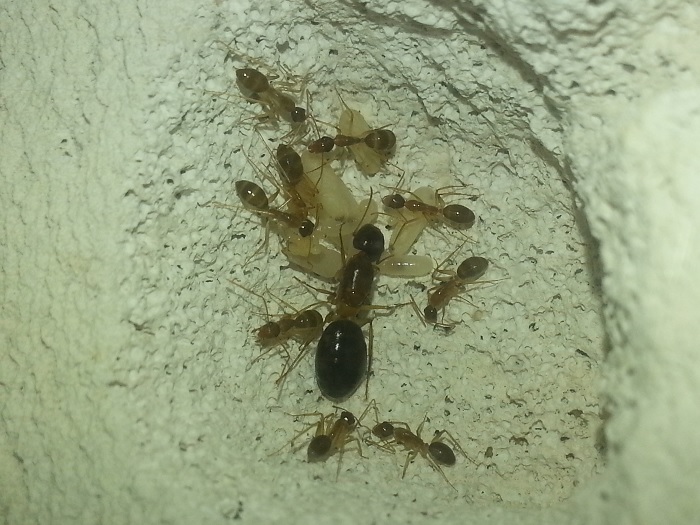
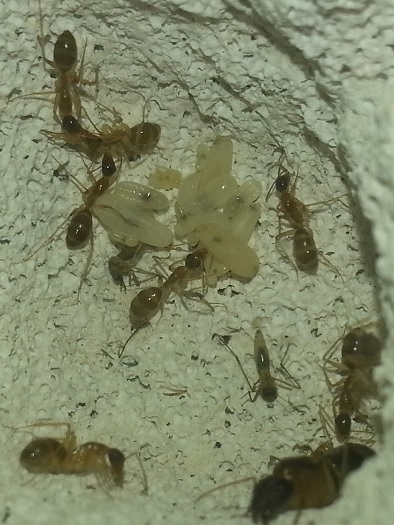



The colony looks happy and healthy, thanks for sharing!
I think I have a similar species, but they are a bit behind yours. I am in a colder part of NSW so maybe they develop more slowly. Interesting that they eat mosquitoes even though they are fully claustral!
16/3/2016
14 workers, one chubby larva.
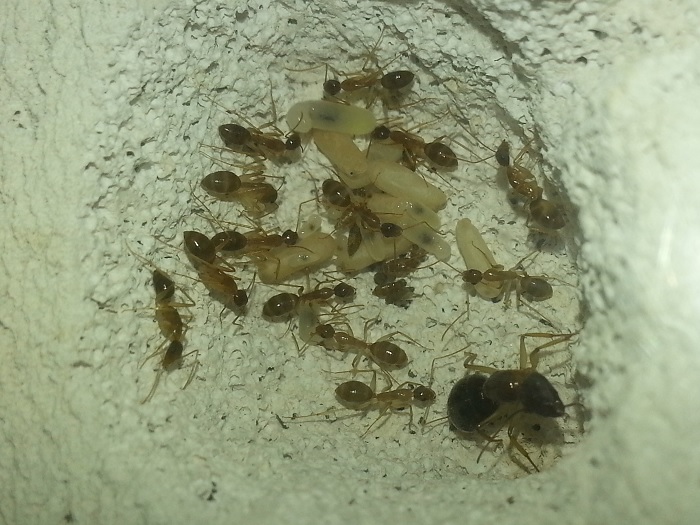
25/3/2016
Lots left over body of the mosquitoes, probably all dried up. The larvae are filled up with honey.
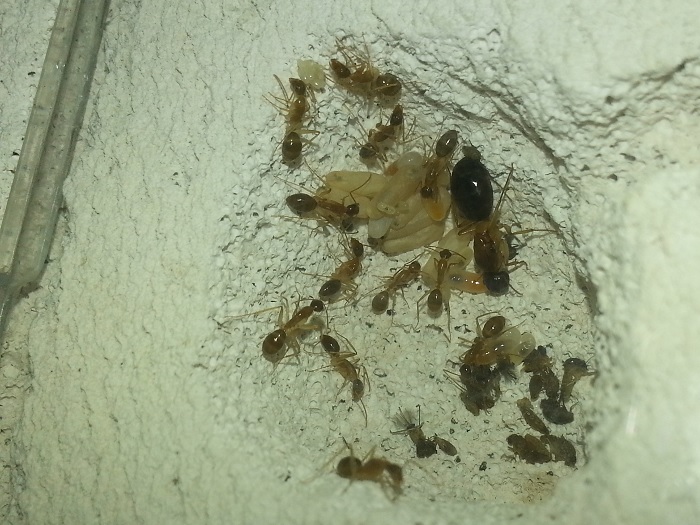
12/4/2016
It has been a while, however the big cocoon is still not darken yet. Usually you can tell a cocoon is about to eclose when its colour gets darker and darker. The workers are very protective. They pile up the cocoons on top of the big cocoon to cover it up when I shine the light in order to take the photo. Hopefully get to see the big worker in future.
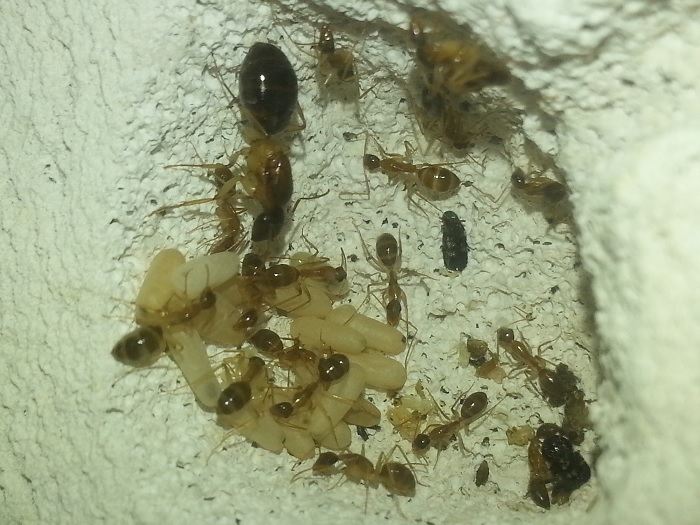
Edited by antmaniac, April 12 2016 - 5:07 AM.
30/4/2016
The big cocoon has darken a bit. Soon after I start trying to find a good angle to shoot the big cocoon, the workers quickly covered it up. In another photo, the newly introduced springtail is enjoying its new home, with plenty of dumps from the ants.
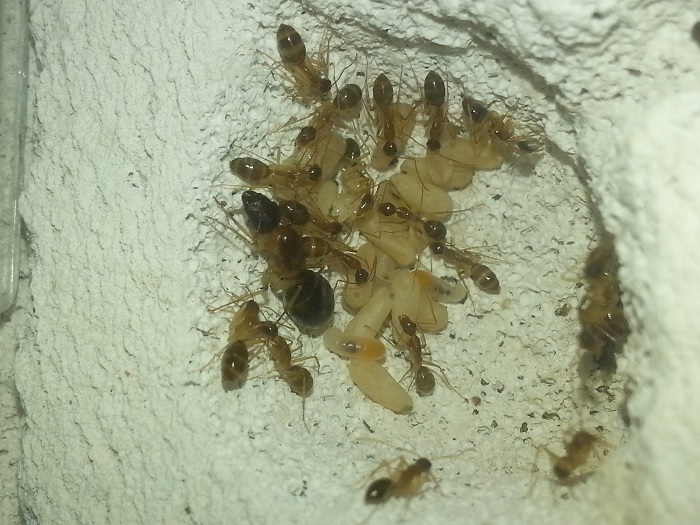
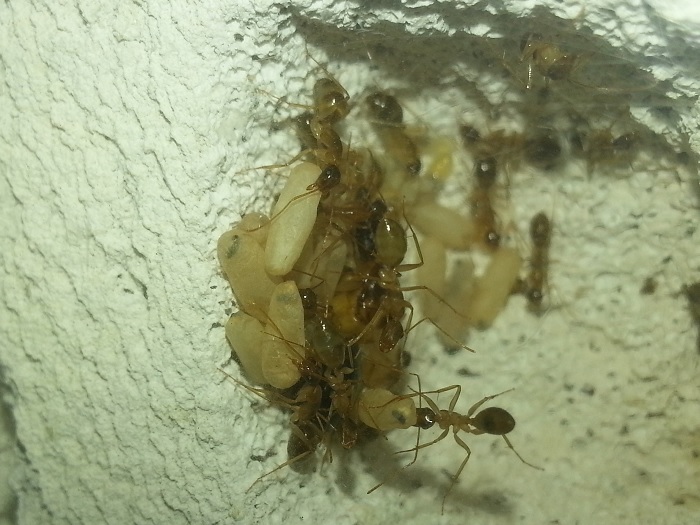
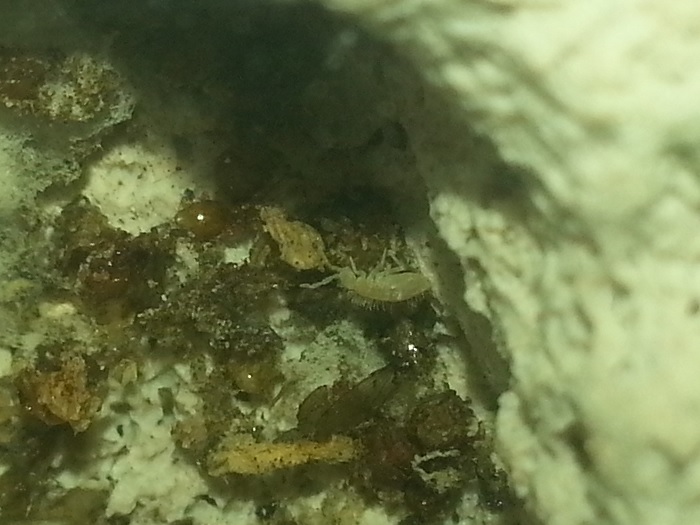
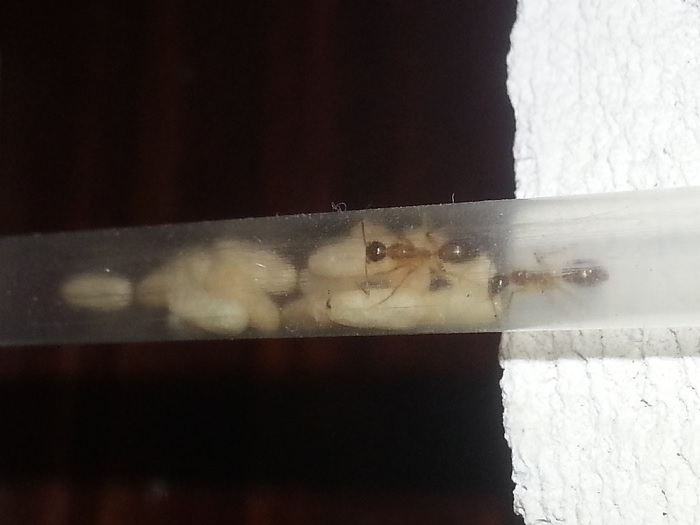
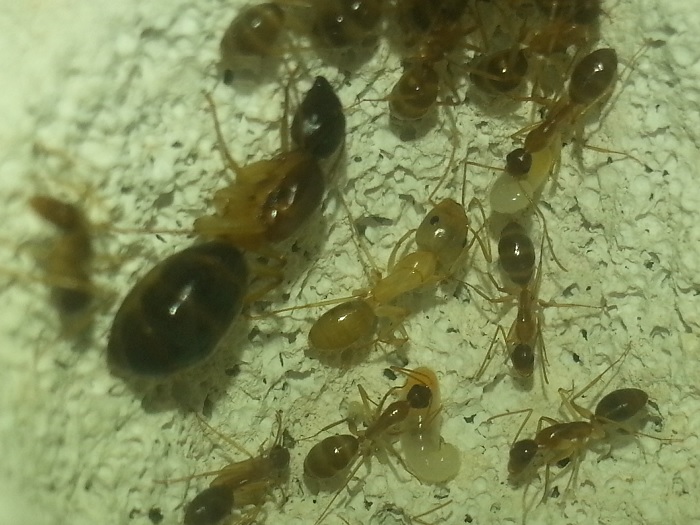
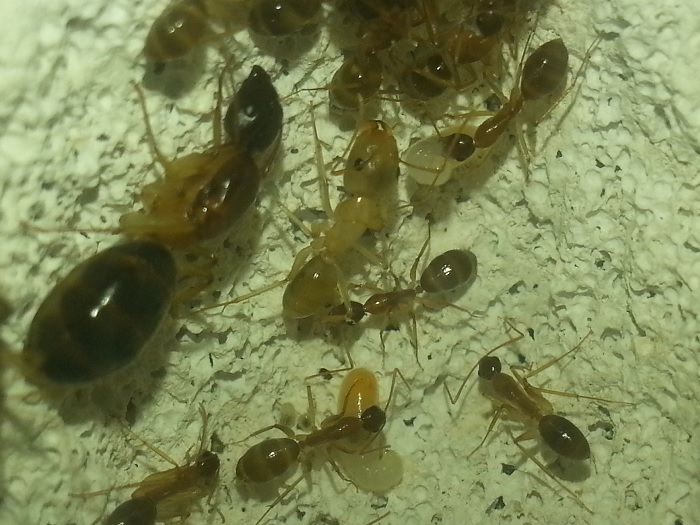
Edited by antmaniac, May 3 2016 - 5:45 AM.
2/6/2016
I checked on the springtail and to my big surprise, lots baby springtails running around! The ants are fine, the major worker is well stocked.
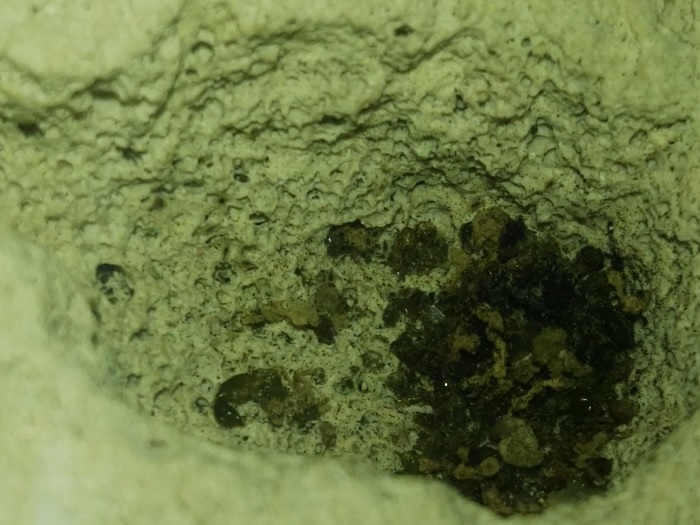
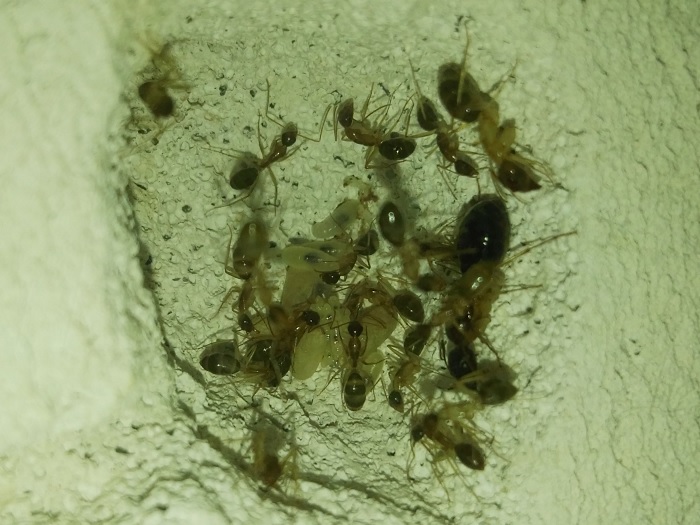
23/10/2016
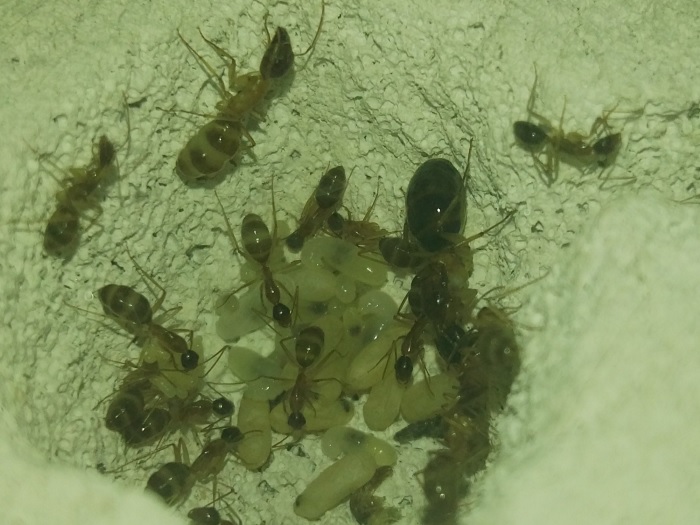
congrats i just got my first major too
Thanks, congrats to you too. This colony just start getting active again after the weather getting warmer now.
Cool journal, I hope to make one about my Camponotus too. It takes ages to the first workers =( I really liked your hydration system, the water goes to the hole nest or there's a point where it stops? Thanks.
Owner of:
Atta sexdens
Camponotus rufipes
Camponotus cf. puntulactus
Pachycondyla striata
Solenopsis saevissima
Cool journal, I hope to make one about my Camponotus too. It takes ages to the first workers =( I really liked your hydration system, the water goes to the hole nest or there's a point where it stops? Thanks.
It takes a long time for the brood to mature indeed. As for the hydration system, the water get soak up through Ytong brick and part of the brick become moist. Depends on the water level and weather condition, higher water level or humid weather will make the gradient higher. It will only cover about half of the brick max, as the excess water will end up sink down and dispersed through the brick.
Still waiting on my first major, keep up the good work
Depends on the stage of the colony, if you feed them more protein, it will help them making chubby larva.
3/12/2016
Lots cocoons and brood. They have minor, medium and major workers now. I wonder if there is next size up.
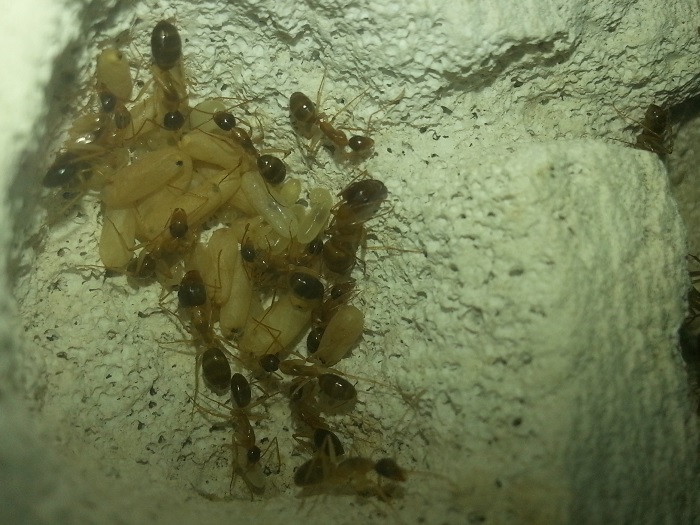
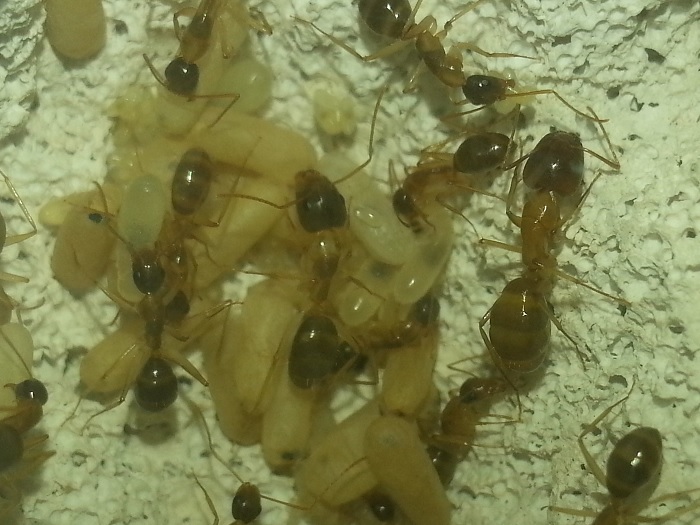
Edited by antmaniac, December 3 2016 - 2:30 AM.
Some Camponotus have super-majors I think.
Keeper of:
Camponotus Vicinus
Prenolepis Imparis
Tetramorium Sp. E x2
That is true. I have seen rather massive head major workers in the area where I caught this queen. But I am not 100% sure if it is the same species as its body appears to be lighter colour than this queen. But now I see this major got red coloured head, you never know.
11/12/2016
Another major just eclose. I have also recorded part of the process. On another hand, it looks like they have lots baby larvae too.
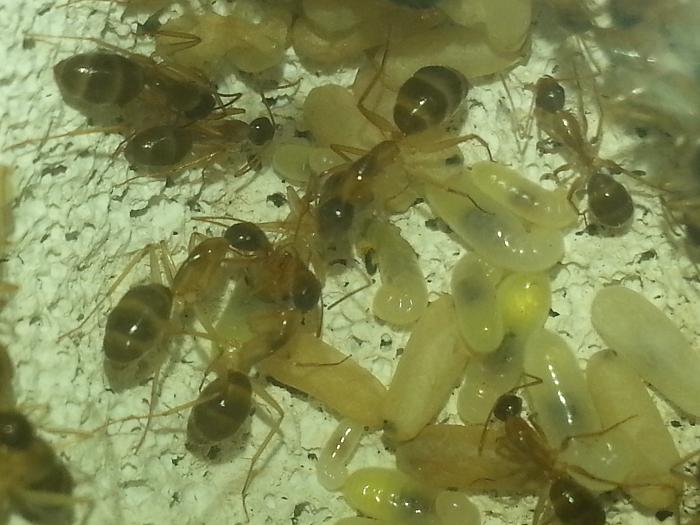
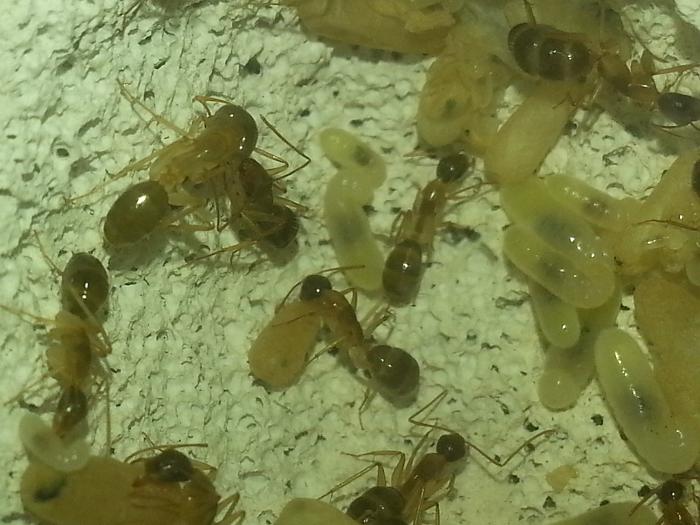
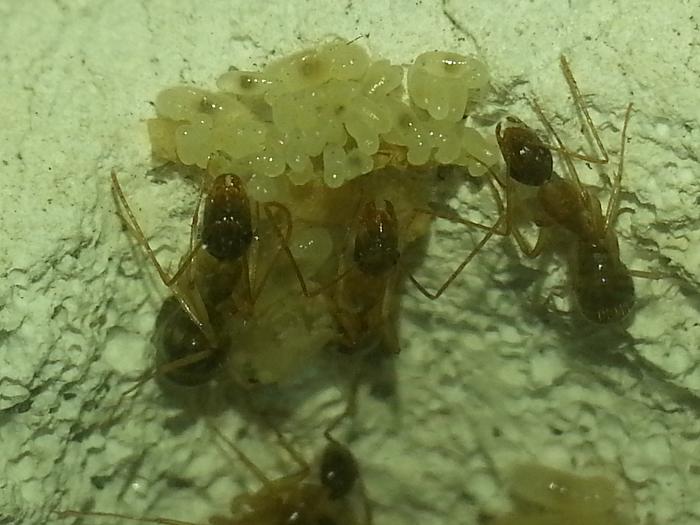
Edited by antmaniac, December 10 2016 - 10:49 PM.
my colony does not have much brood
my colony does not have much brood
How come? Have you tried to give them additional foods? Assuming the weather is getting warmer like here in Sydney.
0 members, 2 guests, 0 anonymous users